EcAMSat Satellite Overview
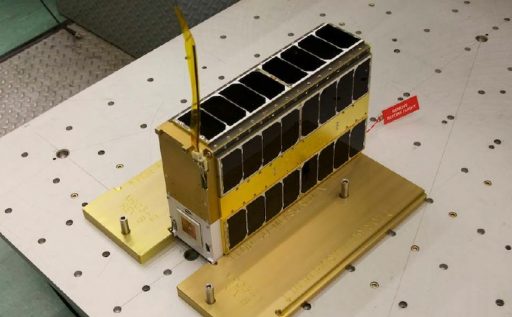
The E. coli AntiMicrobial Satellite (EcAMSat) is a 6U CubeSat dedicated to an investigation on whether and how microgravity affects the antibiotic resistance of E. coli, a well-known bacterial pathogen for gastro-intestinal infection in humans and animals. Developed in a collaboration between NASA’s Ames Research Center and Stanford University, the mission uses heritage from the PharmaSat project flown in 2009 with a number of upgrades.
EcAMSat hosts a total of 48 microfluidic wells with 12 wells arranged in four banks. The wells include six different wild type strains of E. coli and six mutant rpoS strains and the different banks are dedicated to a control without Gentamycin antibiotics, a low-, mid- and high-antibiotic concentration and a reference bank. The satellite hosts an elaborate fluidics system with a metering pump and diaphragm pumps to transport nutrients, antibiotics, dilution medium and alamarBlue color to the wells according to their specific dosage requirements with overflow from each well directed to waste bags.
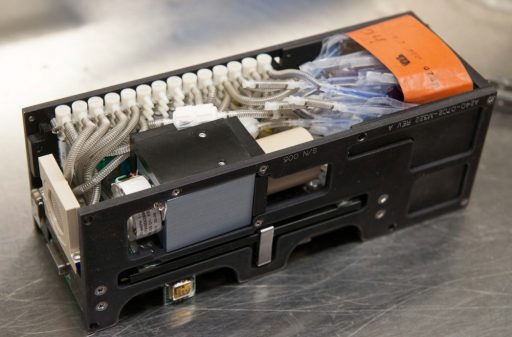
The experiment will be initiated four days after deployment of the satellite for an initial growth and then starvation period for the E. coli strains lasting 48 hours to prepare the bacteria for introduction of the antibiotic agent for another 48-hour incubation followed by fluid exchange to fill the wells with alamarBlue.
This particular dye allows the concentration of live bacteria to be measured by tracking their metabolic activity: enzymes generated by cellular metabolic processes will act on the alamarBlue and change its color to pink. Optical measurement of the visible spectrum of the viability dye against a known concentration curve will allow the concentration/activity of the bacteria to be calculated.
The overall objective of the experiment is determining the lowest concentration of antibiotic that inhibits bacterial growth.
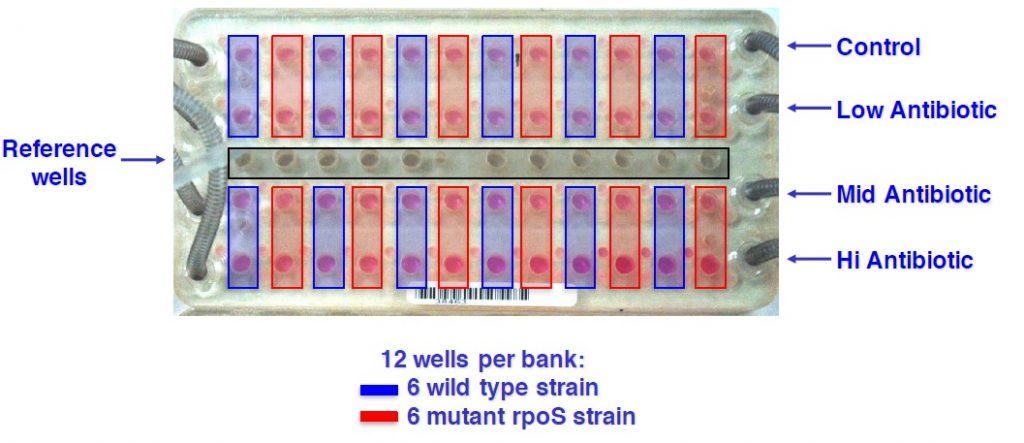
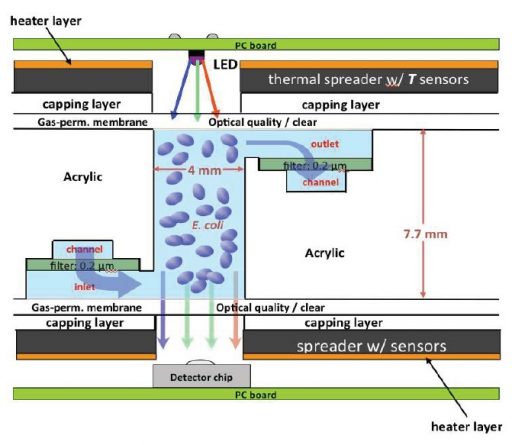
This knowledge will be useful in space and on Earth: for future space travelers, the adverse effect of the space environment on their immune systems which has been uncovered through ISS experiments will be an increasingly serious problem when undertaking long-distance mission, requiring effective countermeasures to protect astronauts’ health during long-duration human missions. The experimentation may also lead to new insights into antibiotics dosages prescribed for Earth-bound patients.
Each well comprises an inlet and outlet filter of 0.2 µm to allow fluidic exchange while retaining the E. coli which are typically 1 – 2 µm in size. These in and outlets are used for the injection of nutrient medium, buffer solution mixed with the appropriate antibiotics concentration and finally the alamarBlue. Sitting above the 4mm diameter well is a well-calibrated LED light source that illuminates the 7.7-millimeter column of E. coli solution and below sits a detector element to record the optical characteristics of the solution in the well to keep track of the color change of the alamarBlue and with that measure the metabolic activity of the E. coli. Auxiliary elements outside the wells are heaters to keep the solution at 37°C incubator temperature and thermal sensors keep track of the temperature environment throughout the experiment.
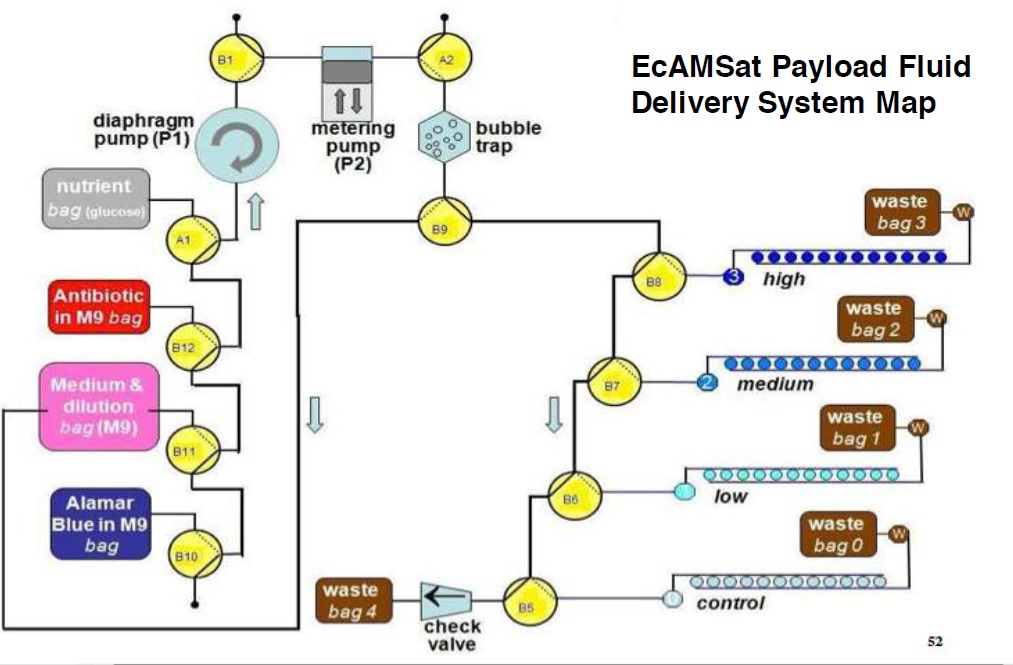
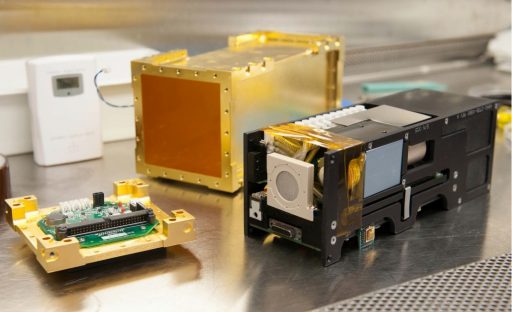
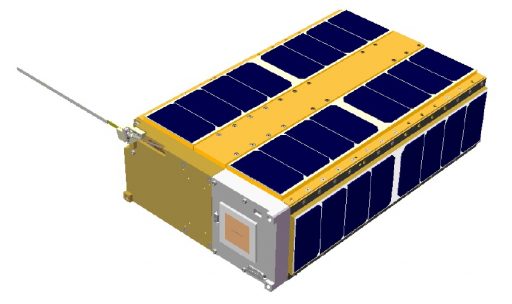
The EcAMSat spacecraft essentially combines the 3U flight spare for the PharmaSat mission with the purpose-built 3U payload unit containing all the wells, pumps and support equipment for the E. coli payload. Very little changes were needed on the PharmaSat platform with the obvious structural change of being coupled to a 3U payload module, also offering a greater area for mounting external solar panels to accommodate the power requirements for the payload.
The structure for EcAMSat essentially holds a pair of 3U CubeSats together and cable interfaces were lengthened from PharmaSat’s original design to deal with the larger internal volume.
Because of limited 6U CubeSat launch opportunities, the EcAMSat spacecraft was optimized for slow orbital decay by increasing its mass by placement of stainless steel plates in strategic positions to avoid overwhelming the satellite’s stabilization system. Additional magnetic torque rods and permanent magnets were added to ensure the satellite stabilizes swiftly after deployment from ISS to reach the micro-G conditions needed by the science payload.
The finished product has a mass of 10.4 Kilograms and measures 10 x 20 x 30 centimeters in size. EcAMSat has onboard memory sufficient to hold the all data generated during 152 hours of science operations, sufficient to store data from the entire experiment run for gradual downlink to the ground via an S-Band system. The total foreseen mission duration for EcAMSat is 45 days.
